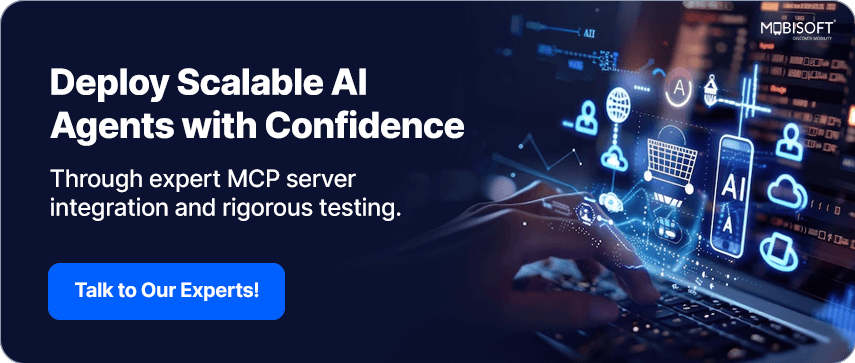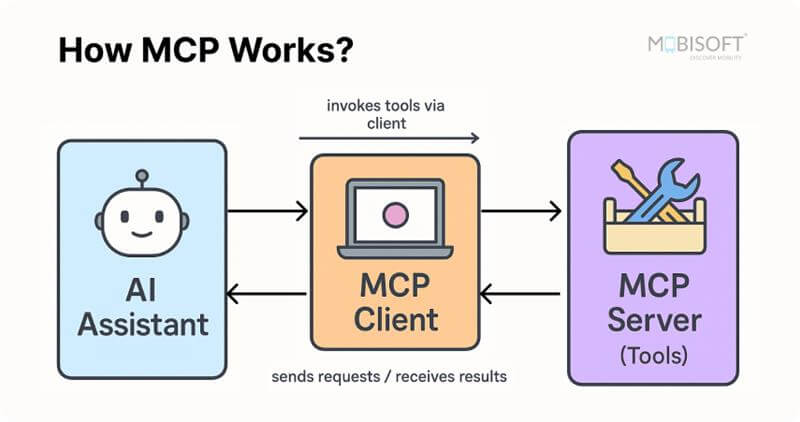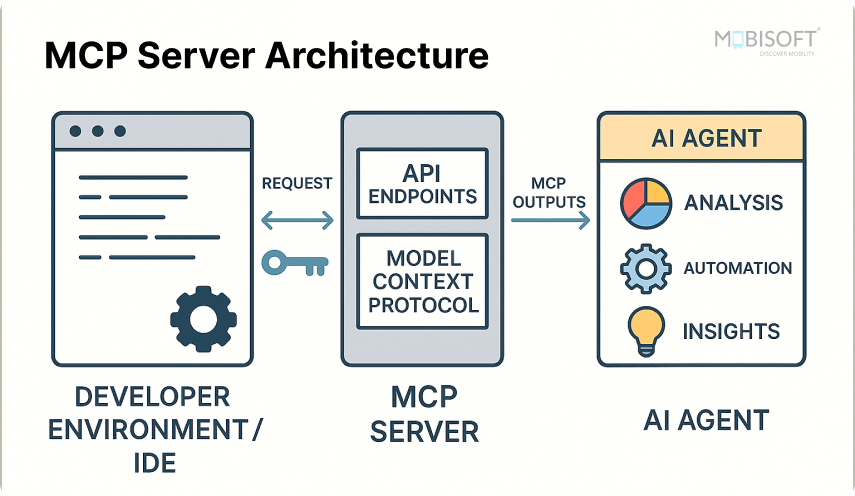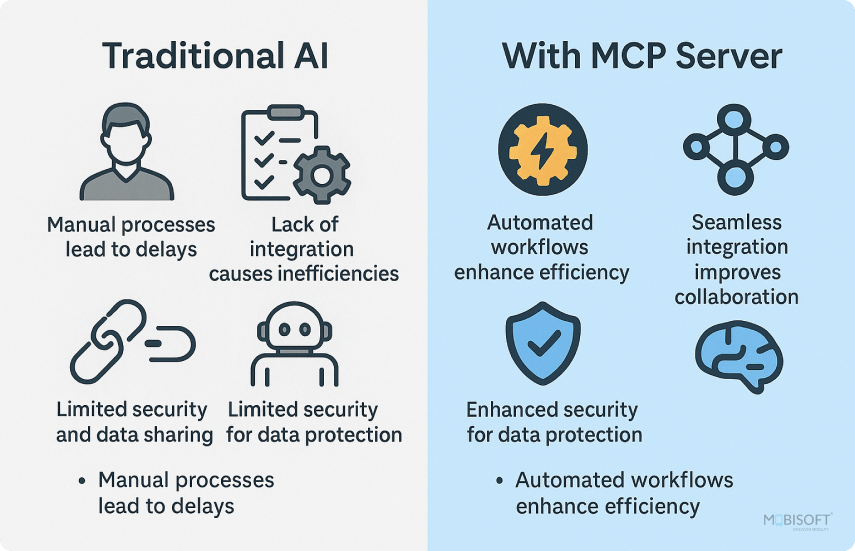Model Context Protocol (MCP) is an open standard developed by Anthropic that enables AI assistants to connect with external tools and data sources. If you’ve ever desired to enhance the abilities of AI assistants such as Claude, GPT, or Gemini with personalized features, the MCP server implementation is the way to do it.
Starting from the very beginning, this guide will teach you how to set up the MCP server and use it effectively. We will walk through a hands-on MCP server tutorial using a practical example of a Maven vulnerability scanner that flags security issues in your Java projects. By the end of this guide, you will have a thorough understanding of:
- What MCP is and how it works
- How to create your own MCP server
- How to connect clients to your MCP server
- How to integrate MCP with popular LLMs like Claude, GPT, and Gemini
For enterprises looking to streamline AI tool integration, explore our MCP Server development and consultation services to build scalable, production-ready solutions.

What is Model Context Protocol (MCP)?
The model context protocol MCP server is a uniform protocol enabling AI assistants to engage with external tools and services. It acts as a bridge between the real users and AI models, allowing consistent and secure communication.
Key Benefits
- Standardized Communication: One protocol works with multiple AI assistants
- Extensible: Create custom tools for your specific needs
- Built-in Features: Progress tracking, logging, and error handling
- Transport Agnostic: Works with all sorts of transport mechanisms, such as HTTP and stdio.
- Language Support: Available in Python, TypeScript, and other languages
How MCP Works
MCP follows a client-server architecture:
- MCP Server: Exposes tools (functions) that perform specific tasks
- MCP Client: Connects to the server and calls tools
- AI Assistant: Uses the client to invoke tools and process results

This MCP server configuration ensures that your AI assistant can handle complex tasks without relying on multiple APIs or middleware.
Learn how MCP enhances intelligent workflows through ourAI agent development and integration services designed for scalable automation.
Setting Up Your Development Environment for MCP Server Implementation

Prerequisites
Before we start, make sure you have:
- Python 3.10 or higher
- pip (Python package manager)
- A text editor or IDE
- API key for Gemini or OpenAI (for the chat client)
This setup helps ensure a smooth MCP server setup experience before we move into building and testing phases.
Installing MCP SDK to Begin AI Agent Server Setup

Set up a virtual environment and start working in a new project directory:
mkdir maven-vulnerability-scanner
cd maven-vulnerability-scanner
python3 -m venv venv
source venv/bin/activate
Install the required packages:
pip3 install -r requirements.txtProject Structure
Create the following structure:
maven-vulnerability-scanner/
├── server.py
├── lightllm_maven_scanner.py
├── scan_pom.py
├── requirements.txt
├── .env
└── sample-pom.xmlBuilding Your First MCP Server for AI Integration

Let’s build an MCP server model context protocol that scans Maven pom.xml files for security vulnerabilities using the OSV (Open Source Vulnerabilities) database.
Step 1: Create the Server Base
Create server.py and start with the basic server setup:
from mcp.server import Server
from mcp.types import Tool, TextContent
import mcp.server.stdio
import asyncio
import xml.etree.ElementTree as ET
import httpx
server = Server("maven_vulnerability_scanner")This creates an MCP server named “maven_vulnerability_scanner”.
You can also refer to our in-depth article onAI Agent Development with MCP Server for additional hands-on examples and real-world deployment insights.



